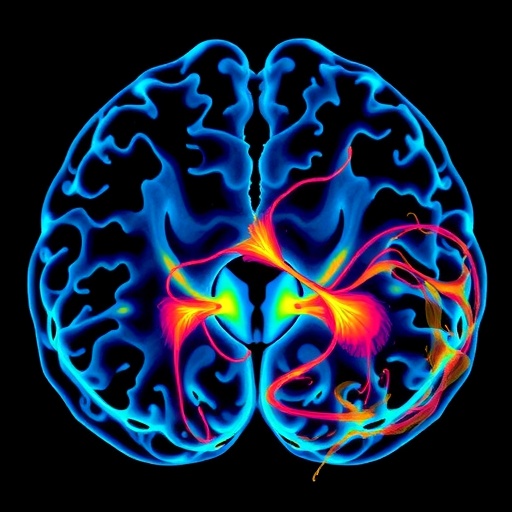In a groundbreaking correction published in BioMedical Engineering OnLine, researchers delve deeper into the complex interplay between aneurysm morphology, location, and their subsequent hemodynamic behavior. This refined analysis revisits earlier findings, emphasizing a variable-controlled approach based on two meticulously studied cases of tandem aneurysms. The study promises to shed new light on the subtleties of aneurysm progression and rupture potential, contributing valuable insights to biomedical engineering and clinical neurology.
Understanding intracranial aneurysms—a dilation of blood vessel walls within the brain—has long been a cornerstone challenge for both engineers and clinicians. Their unpredictable nature, especially in small aneurysms, complicates decisions regarding treatment and prognosis. The team, led by Jun Wan and colleagues from Fudan University in Shanghai, harnessed advanced computational fluid dynamics (CFD) alongside precise morphological assessments, targeting the specific influence of aneurysmal shape and spatial location on hemodynamic parameters within tandem aneurysm scenarios.
Contrary to previous broad analyses, this correction underscores the importance of isolating variables to accurately discern how particular morphological traits affect blood flow patterns. The two cases examined allowed for a rare opportunity to control variables such as size, shape irregularities, and the proximity of aneurysms to one another within the same vascular segment. This method reduces confounding factors, thereby offering clearer causative relationships between morphology, aneurysm position, and changes in flow dynamics.
Hemodynamics, the study of blood flow forces and patterns, is fundamental in aneurysm research because turbulent or abnormal flow can induce wall shear stress variations. These variations contribute significantly to aneurysm growth or rupture risk. The corrected study meticulously mapped these forces using high-resolution patient-specific models, revealing nuanced correlations that had previously been oversimplified or overlooked in the original publication.
One critical aspect highlighted is the differential impact of aneurysm location relative to the parent blood vessel and adjacent aneurysms. For instance, aneurysms situated distally exhibited distinct flow recirculation zones and lower wall shear stress compared to those located proximally. These variations could profoundly influence the mechanical stimuli experienced by the vascular wall, potentially accelerating pathological changes.
The study also introduced refined morphological parameters, such as aspect ratio and size ratio, with greater emphasis. These parameters, intimately linked with aneurysm shape, were demonstrated to modulate intra-aneurysmal flow structures significantly. For tandem aneurysms, even subtle differences in these metrics altered the distribution of hemodynamic stresses, underscoring the complexity of vascular biomechanics in multi-aneurysm contexts.
Using two tandem aneurysm cases allowed the researchers to observe interactive effects—how the presence of one aneurysm might affect the hemodynamics of another nearby aneurysm. The correction articulates that such interactions could create localized flow disturbances, potentially exacerbating the vulnerability of small aneurysms to rupture. This biomechanical interplay is crucial for clinicians who must weigh intervention strategies in patients harboring multiple cerebral aneurysms.
Advanced CFD simulations employed in this research incorporated pulsatile blood flow conditions, closely mimicking physiological realities. This approach enhances the translational value of the findings, allowing for better prediction models that could be integrated into clinical decision-making workflows. The correction refines previous computational assumptions and boundary conditions, thereby enhancing the reliability of predicted hemodynamic behaviors.
The collaborative nature of this study, spanning departments of engineering, radiology, interventional radiology, and biomechanics, highlights the importance of interdisciplinary approaches in tackling vascular diseases. Faculty and experts from Fudan University and affiliated hospitals contributed vital clinical and technical expertise, ensuring that the models were not only mechanically precise but clinically relevant.
Importantly, the correction addresses potential oversights in earlier interpretations, advocating for cautious consideration of aneurysm morphology and position when evaluating rupture risk. This nuanced understanding challenges the one-size-fits-all approach and suggests that personalized assessments based on detailed hemodynamics and morphology could improve patient outcomes.
The implications of this work extend beyond neurology into the broader field of cardiovascular engineering. Insights from the study can guide the design of more effective endovascular devices, such as flow diverters and stents, customized to alter hemodynamic forces favorably. Additionally, this depth of analysis may inspire future longitudinal studies incorporating patient follow-ups to correlate predicted hemodynamics with actual clinical events.
Future research building on this variable-controlled framework will likely expand to larger cohorts, validating the observed trends and potentially incorporating machine learning algorithms to optimize predictive accuracy. This correction thus revitalizes a vital area of aneurysm research, representing a meaningful step toward precision medicine in the management of complex cerebrovascular conditions.
In conclusion, the corrected study by Wan et al. illuminates the intricate relationship between aneurysm morphology, location, and hemodynamics with unprecedented precision. By leveraging variable-controlled analyses within tandem aneurysms, it lays the groundwork for refined risk stratification and tailored therapeutic interventions, marking a significant advance in biomedical engineering’s role in combating cerebrovascular disorders.
Subject of Research: Effects of morphology and location on hemodynamics in small intracranial tandem aneurysms through a variable-controlled study.
Article Title: Correction: Exploration of the effect of morphology and location on hemodynamics of small aneurysms: a variable-controlled study based on two cases with tandem aneurysms
Article References: Wan, J., Jiang, Y., Xu, L. et al. Correction: Exploration of the effect of morphology and location on hemodynamics of small aneurysms: a variable-controlled study based on two cases with tandem aneurysms. BioMed Eng OnLine 24, 69 (2025). https://doi.org/10.1186/s12938-025-01398-1
Image Credits: AI Generated




